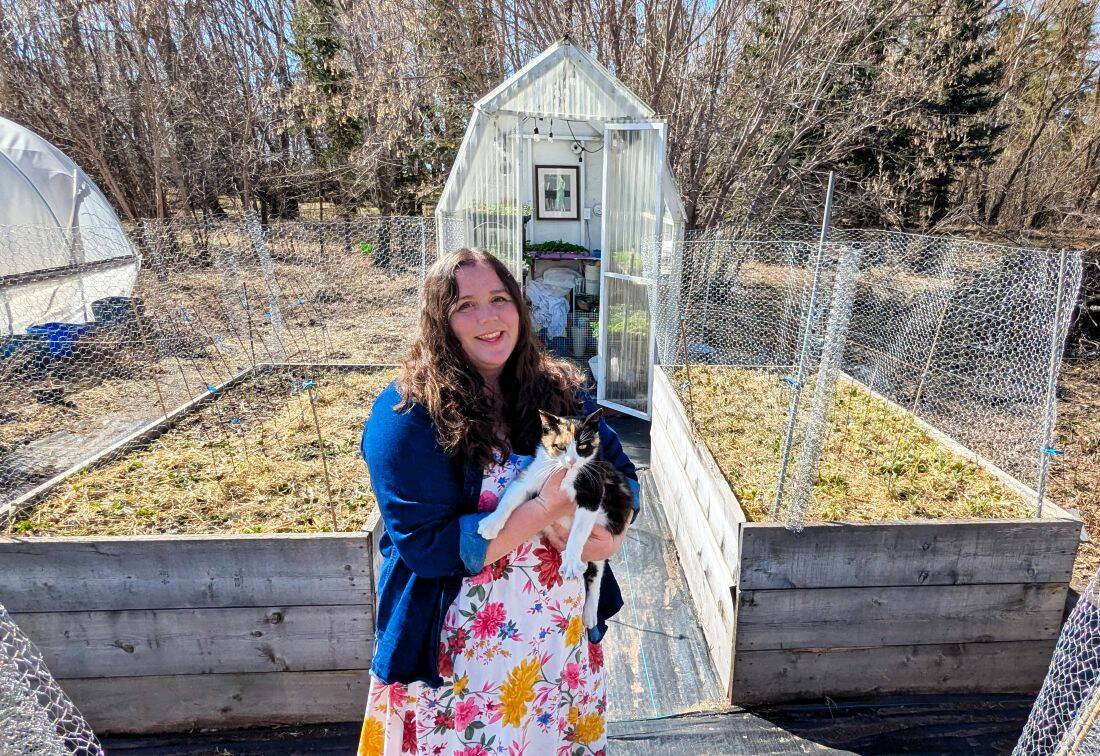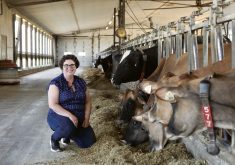This is the third in a series of articles looking at the future of Canadian agriculture. The first article considered “foresight,” a formal planning process used to envision the future. In the second article, entrepreneur Robert Saik said that in the future, farmer’s mental machinery will be the most important on-farm asset.
Mary Robinson, president of the Canadian Federation of Agriculture, manager of a family farm operation on Prince Edward Island, and board member of her family farm’s associated food companies, spends much of her time thinking about the future of the agriculture industry.
The need to reschedule our discussion on the topic of “changes in agriculture” so Robinson could deal with the impacts of Hurricane Fiona on her farm foreshadowed her answer. “The changing climate and the change we’re already seeing will be the biggest change we face,” Robinson says. When it comes to weather in the Maritimes and throughout the world, “there’s a huge change in how unpredictable it is and how severe it is.”
Read Also

A season of trial and colour
Following a Saskatchewan flower farmer through the seasons.
In preparing for the future, Robinson says, it’s important to set aside time to consider the big picture. “Normally, you’re too busy fighting the hurricane of the day to take that time.” As our climate evolves, Robinson says, “we look at new pests and new diseases but we can also look at opportunities.”
Canada’s potential
Robinson is enthusiastic about the future of Canada’s ag sector. Some of her positive attitude is fueled by the “Barton Report” — the informal name for the recommendations published by the federal government’s Advisory Council on Economic Growth in 2017. (The council was chaired by Dominic Barton, who was then a global managing partner at McKinsey & Company, an international consulting firm.)
The Barton Report promoted the potential for growth in Canada’s agriculture and agri-food sector based on Canada’s supply of water and arable land, strong research history, and talented companies and entrepreneurs. Canada already serves many global markets and will increasingly meet Asian markets’ rising demand for protein.
Other countries face constraints ranging from a lack of water to high energy prices, but Canada is well-positioned to supply the increasing global demand for food. “Now is really our time,” Robinson says. Due to our geographic location, climate change may be less destructive in Canada than in other regions. “We might have a more favourable curve over the next 20 years than many other countries.”
Robinson is sensitive to the hardships other locations will experience due to climate change and does not want to seem opportunistic. “We are not ‘winners’ in this,” she says, referencing the intense hurricane that hit P.E.I. this fall. However, as world population increases, “the requirement for food isn’t going to go away.”
“At CFA,” she says, “we’ve really felt that there needs to be a lot of focus put on agriculture’s potential as a tool to fight climate change. It’s continually being overlooked.” Robinson would like to see farmers receive credit for what they do to fight climate change, actions like proactive soil management and investments in green technology and sustainable irrigation equipment.
[RELATED] Farmtario: Unlocking markets in a time of uncertainty
Make it here
Over the next 20 years, Robinson hopes to see a higher level of investment in Canada’s agri-processing sector, allowing Canada to add value to more of our raw production. “Local value-added markets bring stability for primary producers,” she says. However, she adds, “we need to have a larger conversation about how we ensure that primary producers get a fair share of the pie.”
“Farmers have the most skin in the game, but we often get the leanest reward for what we have invested.”
One way to increase farm margins is to increase the share of retail sales going back to the farm gate. Food inflation persists, Robinson says, but “grocery chains are reporting some of the highest profits ever.” To counter this the CFA is taking part in an industry-led process to develop a “Grocery Code of Conduct” in Canada. Negotiations between grocery chain representatives and food industry leaders have been slow, with missed deadlines, but, Robinson says, “we are on a path to develop a code.”
As farms become more efficient and adopt new technology, there may be further farm consolidation. “There are cultural implications to farm expansion,” Robinson says. “People might lose their knowledge of and intimacy with the land. I don’t see how that bodes well.”
We may lose more rural hockey rinks, curling rinks and churches. “There’s a lot of room between where we are now and where we’re headed. We need to travel down that path with eyes wide open and be aware of all the implications,” Robinson says. “Maybe it’s not all bad. But I want us to be aware of it.”
Looking 20 years ahead, Robinson expects many changes. She thinks of her own great-grandmother who was born in 1889 and lived to be 104. “I think about everything she saw in her life. Wars, the beginning of the internet. And this is a period of more explosive growth that we’re coming into now.”
















